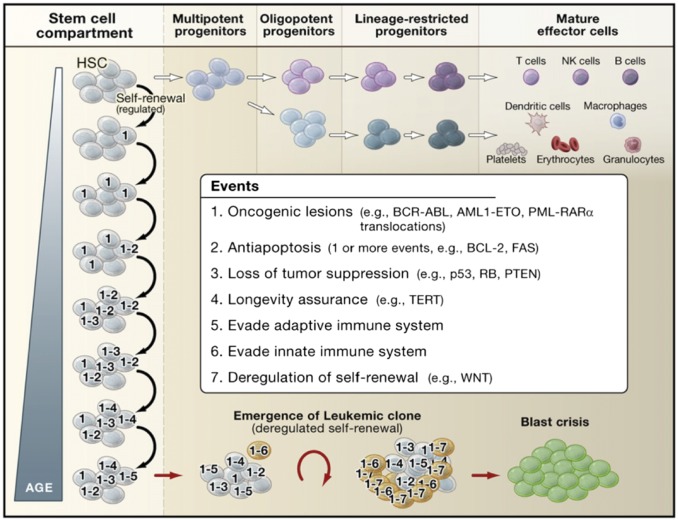Fig. 8.
Model of leukemic progression. In this model, HSCs serve as the reservoir for the accumulation of the genetic and epigenetic events that eventually lead to blast crisis and leukemia. Stem cell self-renewal and differentiation enable heritable mutations acquired in the stem cell compartment to be propagated to both self-renewing progeny and downstream progenitors over the lifetime of the organism. Stem cells with heritable lesions act as substrates for additional hits, which in turn can promote selection of preleukemic clones if lesions imparting a growth or survival advantage are acquired. In this model, seven events are listed as the full complement of events required for the progression of preleukemic clones to leukemia, but the actual number of events may vary depending upon the type of cancer and the nature of the lesions involved as it is possible that multiple oncogenic properties could be conferred upon a preleukemic clone through the acquisition of a single hit. Although the mutagenic events accrue in stem cells, the eventual emergence of leukemic clones occurs at the stage of progenitor cells downstream of HSCs that acquire the capacity for unlimited self-renewal. In CML, this can be the granulocyte/macrophage progenitor, whereas, in acute myeloid leukemia, the leukemic clone can emerge at the level of a multipotent progenitor or at a stage further downstream depending upon the nature of the oncogenic lesions involved. Reproduced with permission from ref. 19.

